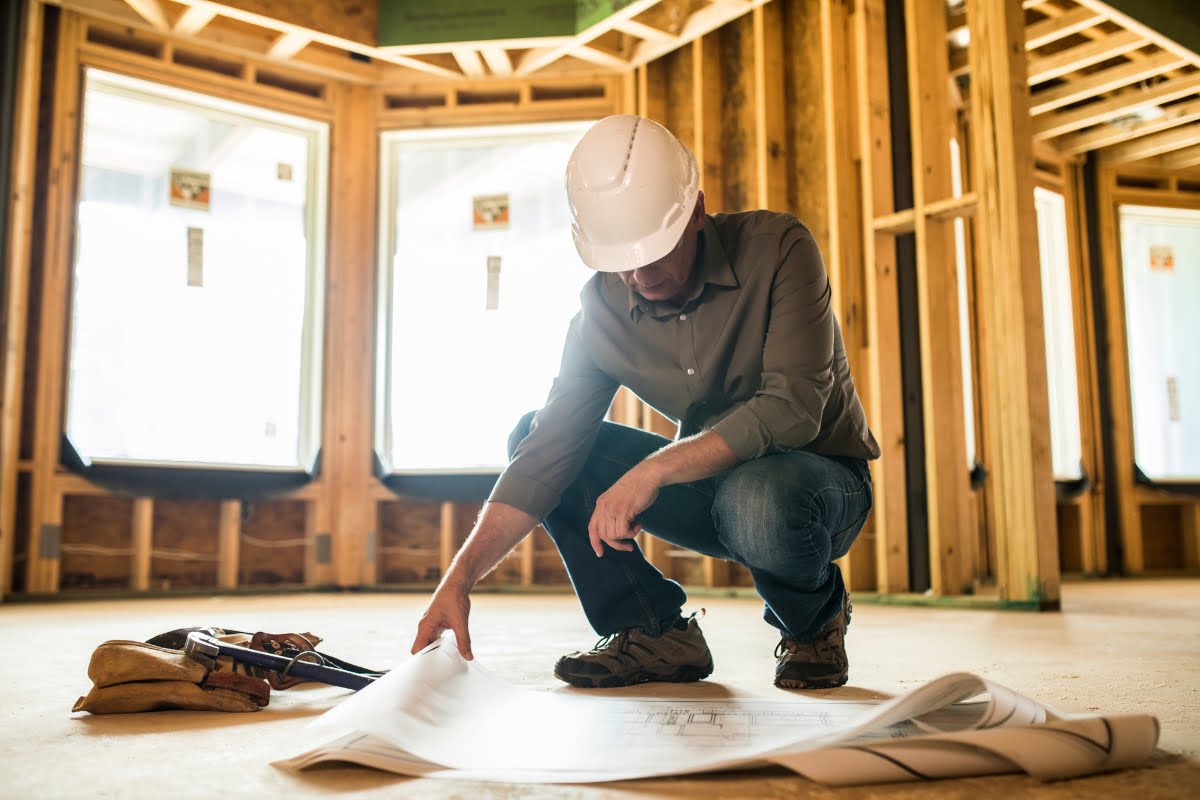Preserving historical buildings requires a delicate balance of maintaining architectural integrity while incorporating modern amenities and ensuring structural safety.
Finding skilled contractors who specialize in historical building preservation is crucial to achieving this balance. These preservation efforts are more than simply preserving old buildings, it’s about preserving their history.
In this guide, we’ll offer valuable tips for hiring the right professionals to undertake the preservation of your historical property. From evaluating their expertise and past projects to understanding the importance of collaboration with preservation societies, we’ll provide insights to help you make informed decisions.
Whether you’re restoring a historic home or a landmark building, these tips will ensure that you hire contractors who are not only skilled but also passionate about preserving the rich history and unique character of your property.
Preserve Your Building’s Legacy: How to Find the Ideal Contractor for the Job
Understanding the Significance of Historic Building Preservation

Before delving into the process of hiring skilled contractors for building preservation, it is essential to understand the significance historic preservation programs.
Historical buildings are not just architectural marvels; they hold immense cultural and historical value. They serve as a tangible connection to our past, offering a glimpse into the lives and stories of those who came before us.
Preserving these historic buildings is crucial for maintaining our heritage and ensuring that future generations can appreciate and learn from them. Historical building preservation involves careful restoration and conservation efforts to maintain the original integrity and aesthetic appeal of these structures while also addressing any structural issues or damage caused by time or external factors.
By preserving older buildings, we can continue to celebrate our shared history, promote tourism, and foster a sense of pride in our communities. However, achieving successful preservation requires hiring skilled contractors who specialize in this niche field.
Researching and Shortlisting Experienced Contractors

The first step in finding skilled contractors for historical building preservation is conducting thorough research. Look for contractors who have experience working on similar projects in your area or region. They should have a proven track record of successfully preserving historical buildings while adhering to conservation principles.
Make use of online resources, local directories, and recommendations from preservation societies or organizations dedicated to heritage conservation. Create a shortlist of potential contractors based on their expertise and reputation in the field.
When evaluating potential contractors, pay attention to their portfolio of past projects, specifically those involving historical buildings. Examine their craftsmanship, attention to detail, and adherence to preservation standards. Additionally, check for any certifications or affiliations with professional organizations or historic preservation offices such as the National Trust for Historic Preservation or the Association for Preservation Technology International.
Reach out to previous clients for testimonials and references to gauge the contractors’ reliability and ability to manage projects within budget and on schedule. Scheduling initial consultations can also provide insights into their approach, communication style, and understanding of your specific preservation needs.
This thorough vetting process ensures that you select contractors who are not only skilled but also dedicated to maintaining the historical integrity of your building.
Verifying Credentials and Past Projects

Once you have shortlisted potential contractors, it’s essential to verify their credentials. Check if they are licensed, insured, and certified by relevant authorities or professional organizations specializing in historic preservation.
Additionally, request references from their past clients who have had similar projects completed. This will give you an insight into the contractor’s workmanship, professionalism, and ability to meet deadlines.
To further verify their credentials, investigate their involvement in any preservation awards or recognitions they might have received.
Awards from reputable organizations in the field can serve as a testament to their expertise and commitment to quality. Moreover, visiting some of their completed projects in person, if possible, allows you to assess the quality of their work firsthand.
Don’t hesitate to ask the contractors about the specific challenges they encountered on past projects and how they overcame them.
Understanding their problem-solving abilities and adaptability can be crucial for the complex nature of historical preservation. Additionally, ensure they are familiar with local preservation laws and regulations to avoid any legal complications.
This comprehensive verification process will help ensure that you choose a contractor with the necessary skills, experience, and reliability to handle your building preservation project successfully.
Assessing Knowledge of Historical Architecture and Conservation Principles

Preserving historical buildings requires a deep understanding of architectural styles, materials, historic preservation laws, and conservation principles. When evaluating potential contractors, assess their knowledge in these areas. Inquire about their familiarity with historical architecture and their approach to preserving the original design elements.
Ask them about the techniques they employ to ensure structural stability while maintaining the historical integrity of the building. A skilled contractor should be able to strike a balance between preserving the original features and implementing necessary upgrades or repairs.
To gauge their expertise, ask for examples of past projects where they successfully integrated modern safety standards and accessibility features without compromising the building’s historical value. Discuss specific materials they might use, such as lime mortar for masonry or historically accurate wood for carpentry, and their sources for these materials.
Inquire about their experience with traditional construction methods and any specialized training they have undergone in historical preservation. A contractor well-versed in these techniques will be better equipped to address the unique challenges posed by historical structures. Additionally, their ability to collaborate with historians, architects, and conservation experts can be a crucial factor in ensuring the project’s success.
Don’t forget to consider their approach to documentation and transparency. A knowledgeable contractor should provide detailed plans and reports that outline their conservation methods and justify their choices, demonstrating a commitment to both historical accuracy and modern standards.
This comprehensive assessment will help ensure that you select a contractor who is not only skilled but also deeply respectful of the historical significance of your building.
Ensuring Compliance with Preservation Guidelines and Regulations

Preservation guidelines and regulations vary from region to region. It is crucial to hire contractors who are well-versed in these guidelines and can ensure compliance throughout the restoration process.
Ask potential contractors about their experience working within preservation frameworks, obtaining necessary permits, and navigating any legal requirements associated with building preservation. This will help you avoid any legal complications or delays during the project.
Inquire about specific projects where they successfully adhered to local, state, or national and state historic preservation standards, such as those set by the National Register of Historic Places or local historical commissions. Understanding their familiarity with these federal historic preservation regulations will give you confidence in their ability to manage the bureaucratic aspects of the restoration.
Additionally, discuss their process for consulting with regulatory bodies and how they handle inspections and approvals. A knowledgeable contractor should have a proactive approach to communicating with preservation authorities and be adept at preparing the required documentation, such as architectural plans, historical significance reports, and environmental assessments.
Ensure that the contractor is committed to staying updated on changes in preservation laws and guidelines. Their ability to adapt to new regulations can be crucial in maintaining compliance and securing necessary approvals.
Finally, verify their track record of managing projects within regulatory constraints without compromising the historical integrity of the building. This ensures that your restoration project will meet all legal requirements while preserving the authenticity and heritage of the structure.
Discussing Restoration Approach and Techniques

A successful restoration project requires open communication between you as the client and the contractor. Discuss your vision for the project, including any specific requirements or concerns you may have.
The contractor should be able to explain their restoration approach in detail, outlining the techniques they plan to use while addressing your concerns. This discussion will help establish a mutual understanding of expectations and ensure that both parties are on the same page throughout the project.
Inquire about the specific restoration techniques they propose, such as methods for stabilizing structures, repairing or replicating original materials, and preserving unique architectural features. Ask how they plan to integrate modern building codes and technologies without compromising the historical integrity of the building.
Discuss potential challenges that might arise during the restoration, such as dealing with structural weaknesses or uncovering unforeseen issues, and understand their strategies for addressing these problems. Their ability to anticipate and effectively manage obstacles is crucial for a successful project.
Explore their timeline and project management practices to ensure they can meet deadlines and maintain clear communication throughout the restoration process. Regular updates and progress reports should be part of their approach to keep you informed and involved.
Look into their approach to sourcing materials. Using historically accurate materials and methods is often essential for maintaining the building’s authenticity. Ensure that the contractor is committed to finding high-quality, appropriate materials, even if it requires sourcing from specialized suppliers.
By thoroughly discussing the restoration approach and techniques, you can ensure that the contractor’s methods align with your vision and the historical significance of the building, leading to a successful and respectful restoration.
Securing Proper Insurance and Contractual Agreements

Prioritize contractors who carry adequate insurance coverage for historic building preservation projects. This insurance should cover any potential damages or accidents that may occur during construction, including general liability, workers’ compensation, and property damage insurance.
Verifying the contractor’s insurance coverage not only protects you from financial liability but also demonstrates the contractor’s professionalism and commitment to safe practices.
In addition to insurance, ensure that you have a detailed contractual agreement in place. The contract should outline project timelines, payment schedules, and any specific terms or conditions agreed upon by both parties.
Key elements of the contract should include a detailed scope of work, specifying all tasks and responsibilities of the contractor, and the materials to be used. This helps prevent misunderstandings and ensures that both parties have a clear understanding of what is expected.
The contract should also include provisions for handling unexpected issues or changes in the project. This might involve contingency plans, procedures for change orders, and clear definitions of how additional costs will be managed. Including a dispute resolution clause can also be beneficial, outlining how conflicts will be addressed, whether through mediation, arbitration, or other means.
Ensure that the contract is reviewed and approved by legal counsel to confirm that it is comprehensive and enforceable. Having a legally binding contract protects both you and the contractor, providing a framework for accountability and clarity on project expectations.
This thorough approach to securing insurance and contractual agreements ensures a smooth and successful restoration process for your historical building.
Setting Realistic Budget and Timeline Expectations

Preservation projects can be complex and time-consuming. It is essential to set realistic budget and timeline expectations from the outset.
Work closely with the contractor to develop a comprehensive project plan that includes a detailed breakdown of costs, including materials, labor, permits, and any additional expenses. This will help you avoid unexpected financial burdens during the project. Consider creating a contingency fund to cover unforeseen expenses that may arise due to the unique challenges associated with historical preservation.
Similarly, establish a realistic timeline for completion based on the scope of work involved. Preservation projects often require meticulous attention to detail, so it’s important to allow sufficient time for quality workmanship. Discuss potential delays with your contractor, such as sourcing specialized materials or dealing with structural issues that may be discovered during the restoration. By anticipating these factors, you can better prepare for an extended timeline if necessary.
Regularly review the budget and timeline with your contractor to ensure the project stays on track. This includes setting milestones and checkpoints to assess progress and make any necessary adjustments. Open communication is crucial to address any deviations from the plan promptly and efficiently.
In addition, consider the impact of seasonal weather conditions, which can affect the pace of exterior work and material availability. By factoring these variables into your planning, you can set more accurate expectations and minimize disruptions.
By setting realistic budget and timeline expectations, you can ensure that your preservation project proceeds smoothly, maintaining the integrity and heritage of the structure while managing costs and time effectively.
Monitoring Progress and Quality Control

Throughout the restoration process, it is crucial to monitor progress and maintain quality control. Regular site visits will allow you to assess the contractor’s workmanship, address any concerns promptly, and ensure that the project is progressing according to plan. Document each visit with notes and photographs to keep a detailed record of the project’s evolution and any issues that arise.
If possible, involve preservation experts or consultants who can provide additional oversight and guidance during critical stages of the project. Their expertise can help ensure that historical preservation standards are met. These experts can identify potential problems early and suggest solutions that align with conservation principles.
Establish a clear communication protocol with your contractor and preservation consultants. Regularly scheduled meetings, either on-site or virtually, can help keep everyone aligned on project goals, timelines, and any adjustments needed. During these meetings, review completed work, upcoming tasks, and any challenges faced.
Implement a system for quality checks at key milestones, such as the completion of structural repairs, installation of historical materials, or finishing work. This proactive approach helps maintain high standards and ensures that each phase meets your expectations before proceeding to the next stage.
Encourage transparency from your contractor, asking for regular updates and detailed reports. This level of accountability can prevent misunderstandings and ensure that the project stays on track.
By actively monitoring progress and enforcing rigorous quality control, you can safeguard the integrity of the restoration project and achieve a successful outcome that honors the historical significance of the building.
Conclusion: Sustaining the Legacy of Historical Buildings Through Skilled Preservation Practices
Historic building preservation is not just about maintaining physical structures; it’s about preserving our collective heritage for future generations. By following these tips for hiring skilled contractors in building preservation projects, you can contribute to sustaining the legacy of these architectural treasures.
Preserving historical buildings requires skilled contractors who understand the nuances of maintaining architectural integrity while updating for modern use. For expert commercial and residential remodeling services, trust FD Remodeling Company. Our experienced team is dedicated to delivering quality craftsmanship that respects the history and character of your property. Send us a message through our website contact form or call 404-857-5582 to discuss your project today.




















